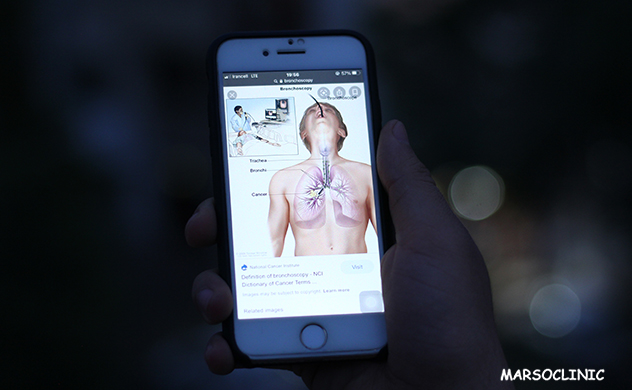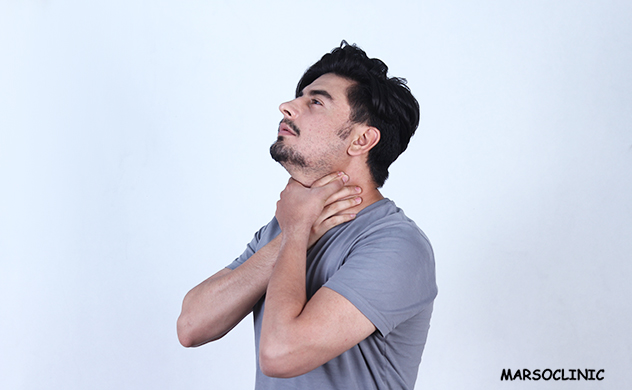What are the after effects of a bronchoscopy?

Are doctors going to do a bronchoscopy for you or your loved ones in the coming days?
Do you know why bronchoscopy is performed?
Do you know how bronchoscopy is performed?
Do you know what will happen during bronchoscopy?
Do you want to know what happens after bronchoscopy?
Read more We have tried to answer all your questions scientifically and correctly.
Bronchoscopy consists of a combination of two parts
Bronco means airways. Scopy is also a Latin suffix meaning to see and to watch
Then bronchoscopy is
The way your doctor sees and examines the airways below your throat.
What is the bronchoscopy used for and how will the doctor observe the airways below our throat?
After training under anesthesia, a trained doctor will insert a very thin, flexible, flexible tube with light and a camera into it through your nostrils or mouth into your throat, trachea, and right or left lungs. The camera on the head of this thin tube sends a live video on the monitor in front of your doctor while moving from its path, so your doctor moves the telescopic tube in the airways of your lungs at any moment and observes them!
What are the possible reasons for your doctor to prescribe bronchoscopy for you?
Investigation of chronic and prolonged coughs that have not been able to understand their cause in non-invasive ways
Respiratory and lung infections
Evaluation of airway tumors and lung tumors
Following suspicion of infection, mass, or overlapping lung tissue or lung collapse, evidence of which has been found in radiographs and CT scans of the lungs.
We must say that bronchoscopy, in addition to helping doctors diagnose many lung problems, can also have a therapeutic role. For example, a doctor may remove a foreign body left in your airway and bronchi during a bronchoscopy. This foreign body can be a piece of food and…
What are the preparations before bronchoscopy?
Your doctor will tell you to temporarily stop taking the following medications if you are taking them, depending on your condition.
Coagulation-interfering drugs such as:
- ASA
- Brofen, Naproxen
- Warfarin
- Blood thinners such as rivaroxaban and…
You should not eat or drink for six to eight hours before having a bronchoscopy.
What will happen during bronchoscopy?
Your doctor will use local anesthetics to numb your mouth or nose, and will also prescribe a hypnotic to relax you. In this case, you are awake but sleepy. Generally used.
Sometimes it is necessary to perform oxygen therapy at the same time as bronchoscopy.
After you relax, your doctor inserts a bronchoscope tube through your nose or mouth into your throat, then your trachea and one of your left or right bronchi. The bronchi are narrow airways in your left and right lungs.
There may be a brush or brush-like tool at the end of the tubes so that they can collect a sample of suspicious tissue along the way and take it to a doctor.
The samples can give very accurate results to your doctor after being examined.
Sometimes it is necessary to rinse the bronchi and collect the sample after washing. In this process, some normal saline is introduced and then the washed and shed cells in the fluid are collected to be examined. This fluid is suctioned by a doctor.
- Blood
- Mucus
- Infection
- Obstruction
- Mass
- Tumor
- Inflation
They may be seen in the direction of bronchoscopic movement. In cases where there is bronchial obstruction, the doctor may enter the treatment procedure and by inserting a stent, cause the stenosis and obstruction to open and remain.
At the end of the procedure, the bronchoscope exits the same path as it entered.
Sometimes an ultrasound device is attached to the tip of a bronchoscopic tube for a more professional examination.
Sometimes a simultaneous CT scan is required.
The whole process takes about thirty minutes
Because you have received anesthesia and sedatives, you should be monitored for recovery and side effects after the procedure to fully regain consciousness and return your sense of swallowing reflex.
You should not drink or eat anything until your throat sensation is normal and your swallowing reflex is activated.
Gradually, all these problems will return to normal in a short time, and you will be discharged from the bronchoscopy unit in a completely stable and normal condition. It will be normal not to worry because these cases will be corrected soon.
Review of the causes of bronchoscopy.
- Bloody coughs
- Prolonged and chronic cough
- Shortness of breath

- Rejection of lung transplantation
- Damage to the lungs due to inhalation of toxic gases or ingestion of chemicals
- Follow up on a CT scan that shows an infection or lump in the lung
- Lung biopsy
And for the following therapeutic purposes:
- Removing a foreign body
- Open the blocked and narrowed airway by stenting
- Tumor treatment
- Evacuation of lung abscess
Types of sampling in bronchoscopy
Sampling in bronchoscopy is done by different methods such as
- Washing and liquid suction:
Or bronchial lavage, which is injected into the target area with syringes containing normal saline through a bronchoscope, and then the fluids containing the extracted cells are collected and analyzed by suction.
With a brush attached to the tip of a bronchoscope, airway cells are collected and analyzed from top to bottom.
With a very fine needle, samples of suspicious tissue are taken out for analysis
Tissue resection is suspected in the distal tissues of the lung, which is performed using X-rays or fluoroscopic biopsy. After a bronchoscopy, it is normal to have a bloody cough and hoarseness and sore throat. The presence of clear blood and not a blood clot in the cough should be considered abnormal and you should inform your doctor immediately.
After twenty-four hours, you can return to your normal daily activities, but you should expect bruising and sore throat for a few days.
Abnormal bronchoscopic results
Abnormal results following bronchoscopy will be as follows:
- Rejection of lung transplantation
- Narrowing of the trachea or bronchi
- Tumor
- Lung injury and crushing
- Inflammation of the lung tissue
- Viral or bacterial or fungal infections
- Lung abscess
- The presence of parasites in the lungs
Serious complications following bronchoscopy are very rare. Bleeding following a biopsy is likely to be very minor and transient.
Perforation of the lungs or airways:
It occurs in very rare cases and is accompanied by accumulation of air around the trachea and lungs, which is usually relieved by hospitalization and treatment.
Fever occurs very often after bronchoscopy and does not always indicate infection and therefore does not require special treatment.
In addition to the above, you should also consider the side effects of anesthetics and sedatives.